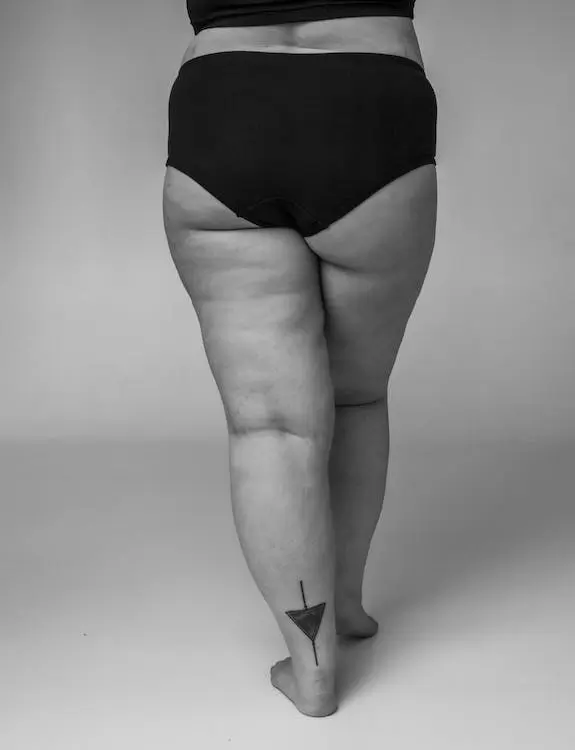Cellulite is a common skin condition that affects nearly 90% of women and 10% of men. It is not harmful to your health in any way, though some people find cellulite unattractive and seek ways to reduce its appearance. So how does cellulite form, and what are the ten biggest cellulite myths?
The main cause of cellulite formation is an imbalance between connective tissue fibers beneath the surface of the skin and fat cells within these fibers. It appears as dimpled or lumpy skin, usually on the thighs, buttocks, and abdomen.
When too much fat accumulates around these connective tissues, it causes them to become weak or stretched out, which then creates a bumpy texture on top of the skin’s surface known as “cellulite.”
This can happen due to genetics (inheriting certain traits from family members), hormones (changes in estrogen levels during puberty or pregnancy), dieting habits (lack of exercise combined with unhealthy eating choices), lifestyle factors like smoking cigarettes, dehydration, age-related changes in collagen production, etc.
There are numerous myths about cellulite that circulate on the internet and even in everyday conversations. I’ll discuss the ten biggest cellulite myths and explain why they are false. Find them below.
Biggest Cellulite Myths You Must Know
Myth 1: Only Overweight Individuals Can Have Cellulite
One of the biggest cellulite myths is that only overweight individuals can have cellulite. This is far from the truth; even thin individuals can have cellulite due to genetics or underlying medical conditions such as poor circulation or hormonal imbalances in the body.
Myth 2: Exercise Reduces Cellulite
Another myth is that exercise alone can reduce cellulite. While regular exercise may help improve overall muscle tone and skin elasticity, it cannot eliminate existing fat cells beneath the surface of your skin, which cause dimpling on areas like your thighs or buttocks when you move around.
Myth 3: Topical Cream Can Get Rid Of Cellulite Permanently
Also, a popular misconception about treating cellulite is using creams that contain caffeine for topical application on affected areas. However, these products do not penetrate deep enough into the tissue layers where fat deposits accumulate, so any results seen would be temporary at best.
Moreover, some ingredients found in these creams may irritate sensitive skin types, leading to more harm than good if used regularly.
Myth 4: Drinking Plenty Of Water
Some believe drinking plenty of water helps reduce symptoms associated with having dimpled-looking areas on one’s body. Even though hydration does play an important role in maintaining elasticity levels, which could potentially aid those suffering from milder forms (not severe), there has been no conclusive proof linking increased consumption directly to alleviating any type-related issues.
Myth 5: Liposuction Removes All Symptoms Of Cellulite
The fifth myth is that liposuction removes all signs of cellulite, when in fact it does not address those caused by fibrous connective tissue bands under your skin that cause dimples on your hips, thighs, and buttocks.
Liposuction only reduces excess fatty deposits from areas like the abdomen, arms, and chin. So, if you are looking for an effective way to get rid of stubborn lumps, other treatments such as laser therapy might be a more suitable option instead.
Myth 6: Tanning Makes Cellulite Less Noticeable
A lot of women believe that tanning makes cellulite less noticeable. This is not entirely true because sun exposure increases the risk for further damage as UV rays break down collagen fibers, making the problem worse instead.
So if you want to conceal those ugly bumps, then try self-tanner products rather than exposing yourself to sunlight directly.
Myth 7: Dry Brushing Helps Get Rid Of Cellulite
Dry brushing does not have any direct effect on reducing or eliminating existing cellulite, however, regular dry brushing might help prevent future formation due to improved circulation which could lead to better absorption of nutrients from food into cells.
Myth 8: Certain Foods Trigger Cellulite Formation
Also among the biggest cellulite myths is that certain foods cause more cellulite than others. Although eating unhealthy food may contribute to weight gain, which could lead indirectly to increased amounts of fat cells in some cases, no specific foods have been proven responsible for causing more noticeable levels of dimples on their own.
Myth 9: Only Women Get Cellulite
Wrong again! Men can develop dimpled skin on their thighs and buttocks due to genetic predisposition or lifestyle choices such as smoking, which makes them more prone to developing dimpled skin than nonsmokers.
Myth 10: You Should Not Wear Tight Clothing If You Have Cellulite
This isn’t true either. The truth is that the appearance of cellulite does not depend on the type of clothing you wear; it has more to do with genetics and other lifestyle factors.
Tight clothes may make your body shape appear different than usual, but they won’t cause any changes to the actual structure or texture of your skin.
What Will Reduce Cellulite?
1. Eat a healthy diet and get regular exercise
To reduce cellulite formation, make sure you eat a healthy diet and get plenty of exercises. Eating foods high in fiber, such as fruits, vegetables, and whole grains, will help keep your body fueled while providing essential vitamins and minerals needed for good health.
On the other hand, exercise helps build muscle mass, which increases blood flow throughout your body and reduces fat deposits that cause cellulite dimples on the skin’s surface.
2. Massage therapy
Another way to reduce the appearance of cellulite is massage therapy. This cellulite treatment option has been known to help improve circulation around targeted areas where fat accumulates, making it less visible over time.
3. Laser treatment
Lastly, laser treatments can be used for targeting stubborn pockets of fat beneath the skin surface and reducing the appearance of cellulite dimples within the area treated after multiple sessions.
Conclusion
It’s important for anyone who suffers from this issue to understand some of the biggest cellulite myths. This way, an individual will know exactly what works best without having to waste time trying out ineffective methods based solely upon misinformation found online.
Ultimately, seeking professional advice from experts who specialize in aesthetic medicine will provide you with solutions.

